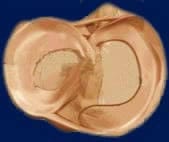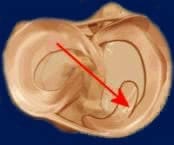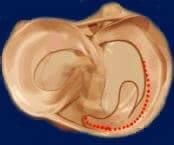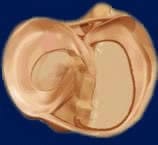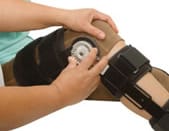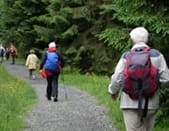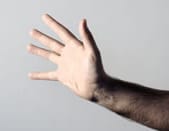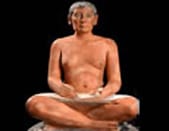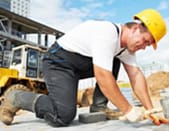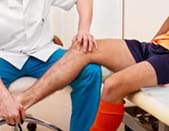
Sport is undoubtedly beneficial to your health, and we can only recommend that you take up a sports activity. But, be careful, it is essential to choose something appropriate for your age and your physical condition.
Exercise helps to preserve and even develop the natural scope of your joints, by fighting against "ankylosis". Sport is the best preventive and curative treatment for osteoarthritis because it promotes the nutrition and mobility of the cartilage.
In addition, it strengthens the muscles and tendons and their point of attachment on the bones.
However, well-developed muscles better "cushion" jolting of joints caused by exercise. Indeed the energy is absorbed by the muscles, not by the bones and joints. In case of impact (a fall or a collision, for example), a joint surrounded by harmonious muscles is always better protected.
This is how sport also helps us in our fight against the ageing of the joint structure.
When is sport harmful?
How do you explain that top class athletes, hence people who are very physically fit, suffer from osteoarthritis?
One must make a distinction between two circumstances of cartilage damage.
- Those related to overexertion in sports
- Those related to cartilage wear over the years
Osteoarthritis in young sports people
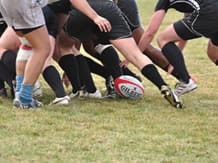
The factors responsible are joint injuries and overexertion.
An injured meniscus, a torn ligament, a recurrent injury to the same place or joint trauma (falling on one knee, for example) can destabilise a joint and increase the amount of friction, which can then lead to osteoarthritis.
Intensive mechanical stress exerted on the joint surfaces causes micro-fractures of the subchondral bone (bone carrying the cartilage). This results in a change in the cartilage leading to osteoarthritis. In addition, the lack of a recovery period can inhibit any cartilage regeneration.
These lesions of collagen fibres occur in very specific actions.
- The joint surfaces of the right shoulder affected in a right-handed table tennis player and a left-handed golfer
- Injury to the superior tibiofibular joint in a football player
Two other risk factors threaten sports people:
- incorrect technique in the execution of a movement
- misalignment of a joint.
Thus, a person practising running with an incorrect foot movement can traumatise their knee.
A tennis player who uses only the muscular strength of their arm to hit the ball risks tendonitis in the shoulder.
The repetition of such microtrauma can lead to osteoarthritis.
Osteoarthritis in "ageing" athletes
Osteoarthritic lesions are common in athletes as they get older and can be due to:
- hyperactivity during an entire sports career
- due to the fact that this sports activity affects a joint suffering from an anomaly
This is the case, for example, in insufficient acetabular coverage (hip joint) which causes osteoarthritis in a dancer.
Osteoarthritis also occurs on a joint with a history of previous injuries such as cruciate ligament rupture or after meniscectomy (removal of the meniscus in a football player).
|
|
|
|
|
|
|
Healthy medial meniscus |
Lesion of the medial meniscus |
|
|
|
|
Surgical procedure |
Result after surgical procedure |
Which sport for your cartilage? A little practical advice
If you're prone to ankle sprains, it would be better for you to take up cycling rather than tennis
If you complain of back pain, water sports are more recommended than running sports.
Choose your sport taking your restraints into consideration.
Once you have chosen your sport do not skimp on the equipment.
Get advice on choosing your running shoes or purchasing your tennis racket. A racket that is too heavy may cause epicondylitis (epicondylitis is a painful condition of the elbow. It is also known as tennis elbow) and worn out shoes can cause tendonitis of the Achilles' heel.
Finally, you have chosen your sport and you are well equipped.
Before you start, always begin with a warm-up phase and end with stretching exercises. Many injuries occur either at the beginning of exercising, because your body is "cold" or at the end, when the muscles are exhausted.
When practising your sport, avoid abrupt alternations in the intensity and duration of your exercise. Cycling helps to illustrate this. Pedalling quickly on a low gear may prove beneficial to the patellofemoral joint (knee joint) while forceful pedalling on a high gear is often aggressive to the kneecap.
To preserve the cartilage it is more recommendable practise sports in the axis of the joints. For example, cardio training workouts on machines, controlled weight training, basic keep-fit exercises or even gentle stretching.
One of the dangers threatening the cartilage, especially in the knees, is excess weight. Regaining your ideal weight through the harmonious practise of a sport, will also be preventive.
Harmonious and reasonable practise of a sport can only be highly recommended in the prevention of osteoarthritis.
As with everything, it's excess that is harmful and which, in this case, can cause various injuries that lead to osteoarthritis.






